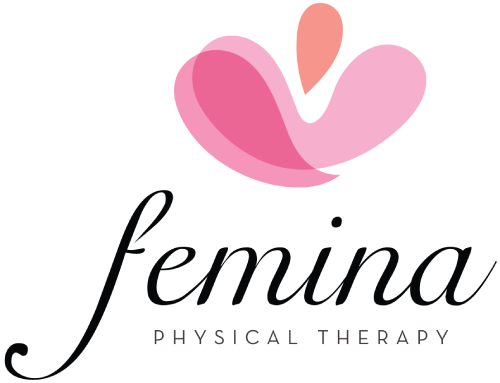Physical therapy visits prior to childbirth, often referred to as birth preparation or “push prep” visits, play a crucial role in preparing expectant parents for delivery. These sessions are designed to equip pregnant individuals with the skills, strength, and knowledge necessary for a smoother birthing process. Whether planning for a natural delivery or a C-section, engaging in birth prep can significantly enhance overall birthing experiences and outcomes.
In this article, we will explore the concept of Birth Prep in detail, discussing what it entails and how it contributes to the childbirth process. We’ll look into the various benefits of incorporating physical therapy into prenatal care and address the relevance of Birth Prep even for those anticipating a C-section.
What is Birth Prep (Push Prep), and What Can I Expect from my Visits?
Birth preparation with our physical therapists is a program that gets you more comfortable during pregnancy and works on issues that have been identified to optimize your birth experience.
During these classes for pregnant women, your physical therapist will:
- Provide education to the expecting patient about the birthing process
- Alleviate any discomfort related to pregnancy
- Teach you how to get in touch with your pelvic floor muscles
- Provide tools and practices to help prevent severe perineal tearing
- Help prepare the birthing person for a better postpartum recovery.
Why Should Birth Prep Be Included in My Prenatal Care?
The following are five key reasons why birth prep should be included in your prenatal care:
1. Education about Labor
Personally, this is one of my favorite parts of a push-prep visit. We get to take our time discussing what each of the stages of labor entail, helpful movements and positions for each stage of labor, and even how your birthing partner can help during this process.
2. Relieves Common Pregnancy Discomforts
Pregnancy can cause a variety of aches and pains due to hormonal changes, the growing weight of the baby, and changes in posture. Some common issues include:
- Back pain
- Pelvic pain and pelvic girdle pain (PGP)
- Sciatica
- Neck and shoulder tension
- Carpal tunnel syndrome
Get ahead of the pain when it begins, not when you are postpartum and have a whole new human to take care of! Many of my patients are told, “your pain will just go away when you deliver the baby”. Sometimes this is the case, but many times aches and pains can linger or even get worse, and it is best to assess and begin to improve your pain and function in the prenatal period. Techniques such as manual therapy, therapeutic exercises, and posture correction can be helpful.
3. Awareness of the Pelvic Floor
Labor and delivery requires significant physical effort, however, during actual labor, the pelvic floor just needs to get out of the way and let your uterus do its job! During our birth prep program, we teach you how to properly contract, and more importantly, relax your pelvic floor so that coordination of these muscles is automatic to you when the time comes! Physical therapy can also help you strengthen these muscles, as well as your core, back, and glutes to help through the rest of your pregnancy and with postpartum recovery.
- Pelvic floor exercises (like Kegels) can help prepare the muscles for the pressure of labor and delivery, reducing the risk of incontinence both during pregnancy and after childbirth.
- Core strengthening enhances your ability to maintain posture and stability during labor and supports your changing posture during pregnancy.
- Lower back and hip strengthening helps reduce discomfort and improve mobility as the baby grows.
4. Reduces the Risk of Severe Tears During Labor
During a birth prep visit, we will teach you numerous techniques that have been proven in research to help decrease your risk of severe tearing – yay! Severe tears (grade 3 and 4) lead to more complications postpartum, and there is really no downside to incorporating these practices into your prenatal wellness routine. Some of these tools we will go through include:
- Optimal birthing positions to decrease your risk of tearing (Aasheim) through optimal labor positions.
- Breathing techniques both leading up to labor and during labor to decrease the strain on your pelvic floor
- Perineal massage, starting at 34 weeks pregnant have been shown to decrease the risk of severe tears (Beckman, Aasheim). While perineal massage is not a guarantee that you will not tear at all, it can help with the stretching sensation and discomfort of stretch of these tissues to help your body prepare for the sensation during vaginal child birth.
Your physical therapist can also provide instruction on specific birthing positions that will be best for you, depending on any injuries you are dealing with currently. For example, if you have labral tears in your hips, you would be advised on avoiding the classic lithotomy position (on your back with your hips and knees flexed past 90 degrees).
5. Prepares You for Postpartum Recovery
While the focus during pregnancy is often on preparing for labor, physical therapy also plays an important role in preparing for postpartum recovery. Many women experience significant physical changes after childbirth, including pelvic floor dysfunction (such as incontinence of bowel and bladder), abdominal weakness, and poor posture due to the stress of pregnancy and delivery.
By strengthening key muscle groups and maintaining flexibility before delivery, physical therapy can reduce recovery time after birth, improve your strength, and decrease your chances of developing pelvic floor dysfunction, including incontinence. Additionally, it can aid in diastasis recti recovery, a condition where the abdominal muscles separate during pregnancy.
Will Birth Prep Help Me If I’m Having a C-section?
Absolutely! As we discussed above, pelvic floor dysfunction can be identified while you are still pregnant. These issues can be addressed during pregnancy and lay down a better foundation for postpartum recovery. You can learn more about postpartum recovery after a c-section here.
Get Started with Our Birth Prep Program
Pregnancy is a time of immense change, and taking care of your body is crucial for both your well-being and that of your baby. Birth prep offers a range of benefits, from relieving common pregnancy discomforts to preparing your body for labor and helping you recover more quickly postpartum. If you’re expecting, consider adding a birth prep visit or two before your delivery. Your body—and your baby—will thank you! All of our therapists at Femina Physical Therapy are specialized to help you during your pregnancy and beyond. Reach out to get started with our classes for pregnant women!
Resources
Aasheim V, Nilsen ABV, Reinar LM, Lukasse M. Perineal techniques during the second stage of labour for reducing perineal trauma. Cochrane Database Syst Rev. 2017;6(6):CD006672. Published 2017 Jun 13. doi:10.1002/14651858.CD006672.pub3
Beckmann MM, Garrett AJ. Antenatal perineal massage for reducing perineal trauma. Cochrane Database Syst Rev. 2006;(1):CD005123. Published 2006 Jan 25. doi:10.1002/14651858.CD005123.pub2
Neta JN, Amorim MM, Guendler J, Delgado A, Lemos A, Katz L. Vocalization during the second stage of labor to prevent perineal trauma: A randomized controlled trial. Eur J Obstet Gynecol Reprod Biol. 2022;275:46-53. doi:10.1016/j.ejogrb.2022.06.007

